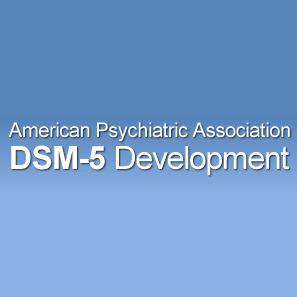APA Posts Draft Revisions to DSM-5
by
Astrid Fiano, DOTmed News Writer | February 24, 2010

The definitions for
mental conditions are
being reassessed
The American Psychiatric Association is preparing to publish the fifth edition of Diagnostic and Statistical Manual of Mental Disorders (DSM-5) in May 2013.
The DSM is the standard text for many mental health professionals to diagnose mental illnesses. Prior to publication, the APA has posted comprehensive draft revisions to criteria of disorders, categories, and assessment.
According to the APA, one important process for developing the DSM-5 is consideration of how gender, race and ethnicity may affect diagnoses of mental illness. The consideration includes how gender, race and culture affect the expression of symptoms, as well as the possibility of cultural bias in criteria for specific diagnoses.
Recommendations have been made on how the diagnostic categories are structured; the use of the multi-axial system; and the use of dimensional measures for diagnostic assessment and treatment planning. As an example, one recommendation is for the DSM-5 to collapse Axes I, II, and III into one axis for all psychiatric and general medical diagnoses. The APA says to do so would enable the DSM to be more compatible with the World Health Organization's International Classification of Diseases.
Another recommendation is for a cross-cutting assessment that would be relevant across the boundaries of any disorder. This assessment would be used at an initial evaluation to establish a baseline, and on follow-up visits to track changes. Such an assessment would not pertain to any specific disorder and would not be a screening test for DSM disorders. The assessment would provide clinicians a means of measuring common domains that may be seen in all patients, including mood, anxiety, substance use or sleep problems. The necessary characteristics of this assessment would be usefulness in clinical practice, simplicity, ability to be completed by a patient whenever possible, and applicability for most patients in clinical settings.
There are also new conditions being considered for inclusion in the DSM-5, proposed by outside sources. Examples include Body Integrity Identity Disorder; Complicated Grief Disorder; Fetal Alcohol Syndrome; Internet Addiction and Seasonal Affective Disorder.
There is a proposed revision for the basic definition of a mental disorder, and proposed revisions to the following categories: Disorders Usually First Diagnosed in Infancy, Childhood, or Adolescence; Delirium, Dementia, Amnestic, and Other Cognitive Disorders; Mental Disorders Due to a General Medical Condition Not Elsewhere Classified; Substance-Related Disorders; Schizophrenia and Other Psychotic Disorders; Mood Disorders; Anxiety Disorders; Somatoform Disorders; Factitious Disorders; Dissociative Disorders; Sexual and Gender Identity Disorders; Eating Disorders; Sleep Disorders; Impulse-Control Disorders Not Elsewhere Classified; Adjustment Disorders; and Personality Disorders.
Autism conditions are proposed to be consolidated under the category of Autism Spectrum Disorders.
The proposed criteria are not final. Comments can be submitted to the APA until April 20, 2010.
The draft revisions may be accessed at: http://www.dsm5.org/Pages/Default.aspx
Read specific comments on race, gender, ethnicity and culture: http://www.dsm5.org/Newsroom/Documents/Race-Gender-Ethnicity%20Release%20FINAL%202.05.pdf
